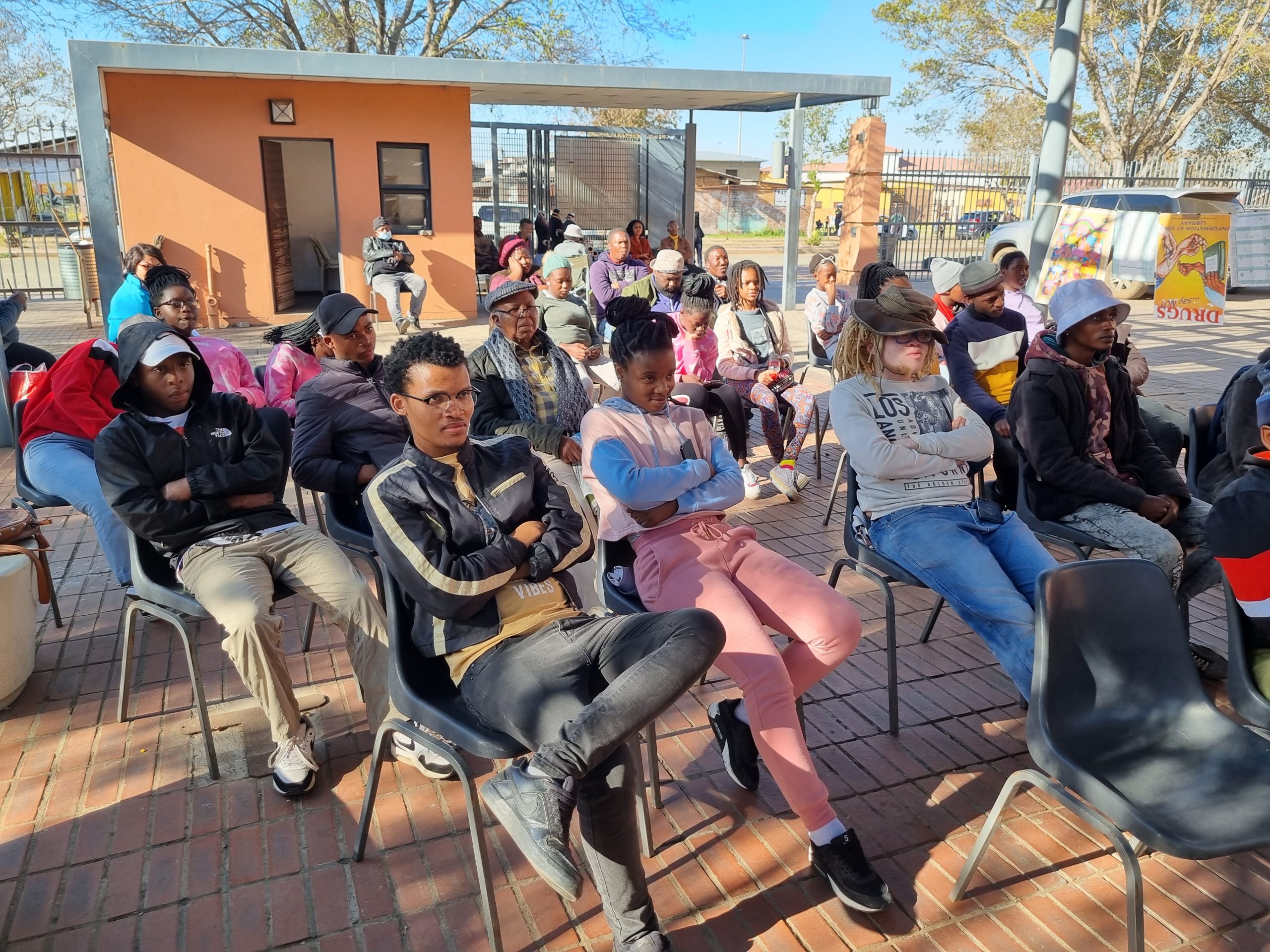
VUT VISUAL ARTS STUDENTS AND ACADEMIC PARTICIPATE IN IMBIZO AT SHARPEVILLE MUSEUM

By Qhawekazi Memani 11 July 2022

Some of VUT Students at the Imbizo.
Saturday, 2 July 2022 was a spectacular day for the Arts Community in the Vaal following a successful arts Imbizo hosted by the Diniso Art Trust in partnership with the Len Foundation at the Sharpeville Museum.
The imbizo was coordinated by VUT’s Ms Nkululeko Khumalo (an independent curator and a print-making lecturer).
Participants included VUT visual arts students and alumni, artists from Sharpeville, students from Market Photo Workshop, WITS university students, school children as well as art supporters across various areas in the Vaal.
The Imbizo served as a call to various artists and universities in the Vaal Region, to start engaging with one another about the arts to give visibility to visual and performance artists based in the Vaal Region.
If You Do Not Exhibit, You Do Not Exist.
There is a common belief that for visual arts and artists living and working in the “cultural margins” (areas other than Johannesburg, Cape Town, and Durban) – visual arts public spaces for showcasing artworks are almost none-existent.
This understanding is motivated by and based on the argument of Sarah Hassan and Olu Oguibe: “If You Do Not Exhibit, You Do Not Exist.” Exhibitions remain exemplars of how art history is produced. They are the building blocks of art history and therefore crucial in moving art from the private to the public domain.
In their opening remarks, legends Gamakhulu Diniso and Len Khumalo said: “Artists from the Vaal are usually described as being in the cultural margins, as ‘invisible presences’ because of the art activities that exist but are unknown outside their immediate surroundings, even though some are doing remarkable work. However, these ‘invisible presences’ in relation to the Vaal region call for a visibility that will not only place Vaal art activities, artists and institutions on a broader map of cultural making in South Africa and beyond; but also offer them recognition and appreciation.”
Speaking from a university arts context, Ms Khumalo said, “most of these exhibitions work in isolation from the curatorial practices. Black artists from the Vaal region suffer from curatorial non-existence and absence from art history. In other words, they are excluded from the history of South African art, which is mainly constructed through curated exhibitions and catalogues as well as academic essays in journals and books. What does get acknowledged about the Vaal region, however, is its political history, which tends to privilege the struggle against apartheid”, she lamented.
This history is concerned with massacres such as those in Sharpeville, Boipatong, Evaton and Zone 7 in Sebokeng. It therefore lacks discourse pertaining to art and local artists and thus Vaal artists are excluded from the construction of the political histories of the Vaal. This exclusion affects the arts and the artists and creates a separation between the university arts and Kasi Arts; instead of them working hand in hand with one another.
According to Khumalo, art from universities and art from Kasi, work hand in hand. “The majority of students are informed by their surroundings. Others were artists from the day they were born. We go to universities to enhance the creativity that was already there. We leave Kasi to go to universities and once we are done with our qualifications we go back to those Kasis’.
The community of Sharpeville requested that similar platforms be created to bridge the gaps within the arts.
Beautiful performances were rendered by the Diniso family – Gamakhulu and his sons, Nyaniso and Nkululeko; community Hip-hop artists, as well as poets from VUT and Sharpeville.




